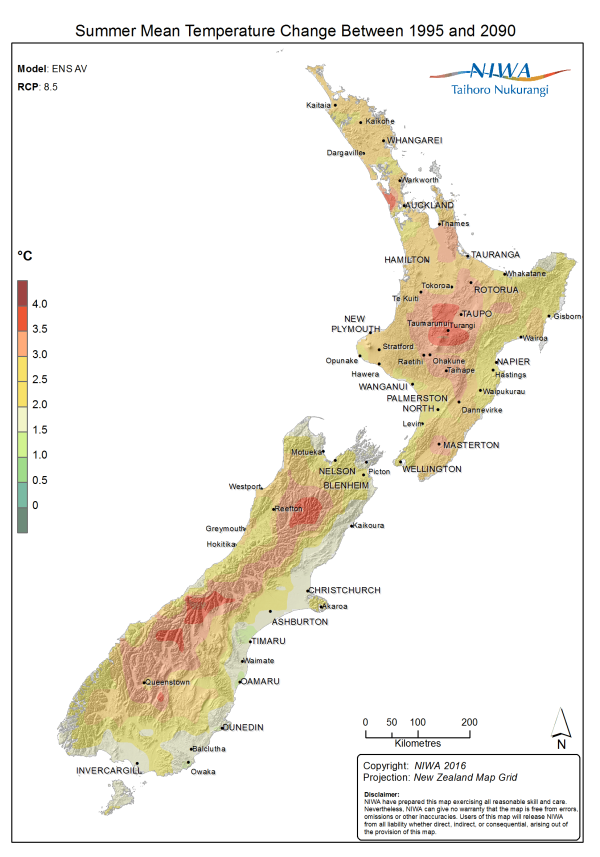Our Future Climate New Zealand is an interactive website that lets you to look at projections for a number of climate variables for New Zealand between now and 2100.
You can produce maps showing projected climate for New Zealand as a whole or charts showing projections for 15 towns or cities. Climate variables include temperature, hot days, frost days, precipitation (rainfall), wet days, very wet days, surface radiation and relative humidity. You can look at individual seasons or the whole year and can choose how far into the future you want to look – 2016-2035 (near future), 2046-2065 (mid-century) or 2081-2100 (end-century).
The projections are based on four Representative Concentration Pathways (RCPs) for emissions and six global models (GCMs). Every combination of RCP and GCM can be explored.
The four representative concentration pathways presented (RCP2.6, RCP4.5, RCP6.0 and RCP8.5) can be thought of as being indicative of the rate and amount of global greenhouse gas emissions over the coming decades, as terrestrial emissions (e.g. from the burning of fossil fuels) are directly related to atmospheric concentrations. RCP2.6, for example, will only be possible if there is a substantial fall in global greenhouse gas emissions over the next few decades. RCP8.5, on the other hand, will eventuate under a scenario of continued high and even accelerated global emissions.
The GCMs are those that were used in the IPCC Fifth Assessment Report (AR5). Each model has been shown to replicate New Zealand's historic climate well. Output from each of these global climate models has been used to downscale the climate projections for New Zealand using NIWA's Regional Climate Model, and these data were used to produce the maps and charts shown on the site.
The map below shows an example output from the tool - projected summer mean temperature change between 1995 and 2100 based on RCP8.5 (high greenhouse gas emissions) and the average of six climate models.

